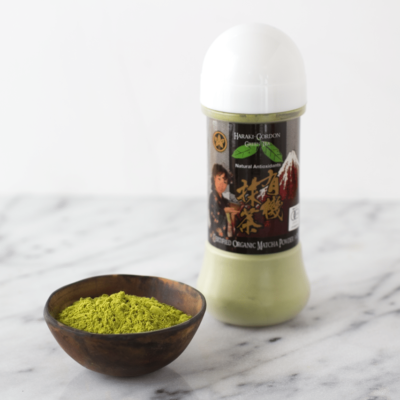Food for Thought 
You cannot tell how spicy a chile pepper is based on it’s color. Size is another story though – usually, the smaller the pepper, the hotter it is. Also, placing it in your mouth and chewing is another great indicator.
Everyone (who is awesome) knows that tomatoes are not vegetables, but actually fruits. The same is true for the pepper – the distinguishing factor being the seeds, of course, botanically speaking.
In England, Australia, New Zealand and Malaysia, the chile pepper is referred to as just “chilli”.
Archaeological evidence from SW Ecuador places the chile pepper as having been cultivated some 6,000 years ago.
The irritating ingredient that gives chile peppers their sting is called capsaicin [cap-say-suhn]. Capsaicin is the primary ingredient in pepper spray. I happen to know a little bit about this irritation from first-hand experience. I recall the time I was eating at a pizzeria in Austria with my husband and brother-in-law. I touched my tongue to a jalapeno, “just to see what it feels like“. Shortly after, I rubbed the side of my eye. Then, of course, it was only shortly after that that my eye immediately formed a scab and began burning like I was on fire. I ran to the bathroom to wash it, but it was pretty much too late. Thank god it wasn’t a habanero pepper. The sting wore off the next day.
The “heat” that peppers possess is typically measured in Scoville units, which is a measure of how much a chili extract must be diluted in sugar syrup before its heat becomes undetectable to a panel of tasters.
In February of 2012, the new Guiness winner was crowned with a Scoville rating of 2 million. It is called the Trinidad Moruga Scorpion, which even sounds bad-ass. To put this into perspective, jalapenos have a Scoville rating of up to 8,000 and the habanero is measured at around 100,000. The Trinidad Moruga Scorpion rating is the same as law enforcement grade pepper spray.
Animals do not have the same sensitivity to capsaicin. It is used to deter squirrels from bird feeders, but birds are not affected by it in the same way because it targets a different pain receptor found in mammals. If only I could find a way to turn off this pain receptor in my head; I could make millions using it as a bar trick.
Chiles have a special place in my heart, as they are the typical spice used in Hungarian cooking, aka paprika. It is made from a very mild red pepper which is dried and then ground into a fine powder. We have a couple pounds of the family’s homemade paprika in our freezer at all times. This spice is the reason why almost every traditional Hungarian dish is orange.
Milk products are best to drink after eating chilies because casein, a protein, breaks the bond between the pain receptors and the capsaicin.
And last but not least, here is my favorite video of someone eating a hot pepper.









Poor Sandy B!
And speaking from experience, the law-enforcement-grade pepper-spray (OC spray, as it’s commonly called on the force) is bad, but gets to be HORRIBLE when you try to rinse it off your face.
The water rinses it into your pores, and when it gets into your eye-sockets, forget it.
DISCLAIMER: I don’t know this because I was arrested or resisting, but from an experience at school!
Uh, ugh! I’ll pass on the pepper spray in the eye sockets.
I have to say, as a hopeless pepperhead, it pleased me to see this blog on this subject. I love ’em all – up to and including the hananeros. Past that point, and even I can’t find the joy in biting into one of these little atom bombs. The habs I grow (one can to a certain extent control the SU factor of their peppers by controlling how much water they get, what type soil you plant them in, etc.) I would believe – just tip of the educated tongue gauging – would pass that 100K SU mark pretty easily. Habs can range from a low of 100K to a high of about 250K… and that is about my tolerance limit. I can tell you that when the Bhut Jolokia first hit the scene a few years ago at 1 million SU, I just HAD to try them. Please believe me, when someone tells you to kiss their Bhut, it’s an offer best refused unless you are SuperPepperHead. I cannot IMAGINE biting a pepper with 2 million SU. Anyway, in meandering about trying to figure out just how to use my habs, I came up with a little recipe that is great on gameday, whether dipped on chips or used to make hot wings. I would advise strongly that those who only handle peppers occasionally invest in some good latex gloves before preparation, as skin burns on your hands are a very real possibility. It goes as follows:
16 (I use 32, but 16 is a good starting point for experimenting) whole habanero peppers , stemmed.
1 (8 ounce) can tomato paste
1 onion , minced
3 tablespoons garlic powder
1 tablespoon virgin olive oil
½ cup distilled vinegar
¼ cup lemon juice
7 tablespoons honey
8 dashes Worcestershire sauce (To make this recipe vegetarian, use vegetarian Worcestershire sauce.)
Directions:
1 Sautee onion in olive oil, stirring in garlic powder until soft. Add a small amount of water and continue cooking for about fifteen more minutes over low heat, stirring occasionally. (As a side note, I had a happy accident while looking for all of the blender parts, and scorched this mixture a bit – all to the good. It added a very nice “roasted” taste.) DO NOT cook your habaneros, as this kills the taste. When the onions are sauteed, place in a blender with the rest of the ingredients (you will want to make sure that your habaneros are whole – not peeled or seeded, as much warmth is contained in the seeds), and puree into a smooth mixture. At this point, you will want to return this mixture to heat for about five minutes – not long enough to kill the flavor of the ‘neros, but just long enough to blend the different tastes well.
2 A bit of a warning — this dip doesn’t seem excessively hot at first blush, because the honey really does mask the capsicum from the habaneros. Give it a few seconds before taking the next bite though, and you will find it to be quite warm.
3 This dip will keep for quite some time in the refrigerator, as I think that mold might actually fear it. I’ve been nibbling on the last batch for a couple of months now, and it only gets better with age.
Larry! Thank you so much for your wonderful recipe not to mention the words of caution for preparing it! I am very interested to try something like this, but I fear that habaneros are a bit too spicy for my taste. What do you think about substituting jalapenos in this dip?
Cheri, Jalapenos have a flavor totally their own and quite different from habs. I honestly can’t say that I know HOW this would taste. But hey, if heat was a factor for me – I’d give them a try in a New York minute. I know from making pepper jellies that jalapenos leave almost no heat after the cooking process, but the flavor is irreplaceable. I came up with a compromise that works very well. I use half jalapenos for taste, half habs for a little warmth. Still not really hot – the cooking process kills a lot of the wow factor in hot peppers – but it does raise the spice level a bit. Another alternative you might try is to disregard the admonition in the recipe NOT to cook your habs, and instead to let them simmer for a while. It would, I think, keep true to the taste of the original recipe, and MAY (my disclaimer) lower the heat level to something you’d find more to your liking. But by all means, give the jalapenos a go, and let me know how it works out. I’m interested to hear.
Oh, and seeding and removing the membranes from the habs (This is where the majority of the “hot” is in a hot pepper – but something OSHA may have to oversee) will help remove some of the capsicum as well.
lol – the curse of the insomniac – the “Oh, btw”! Oh, btw, something just hit me. As far as flavors go, my all time favorite pepper for pure taste is the Cayenne. At a SU rating just above that of the jalapeno, it is what I consider a “mild” hot pepper. In fact, during season, I like to pour fat-free Ranch dressing over them for breakfast. THEY might make a very interesting dip for those inclined to a walk on the mild side!
Larry, some solid comments here. Thank you so much first of all. So I got it, jalapenos for flavor, habs for heat. I have a feeling that your definition of “almost no heat” is a little different from what I’d consider heat. Haha. Will definitely remove membranes if I experiment with them. And lastly, omg, cayenne pepper the BEST. I actually got hooked on it when I did the Master Cleanse fast one time. I thought it would make me sick of it, but now it’s my “Go-To Heat” when I cook.